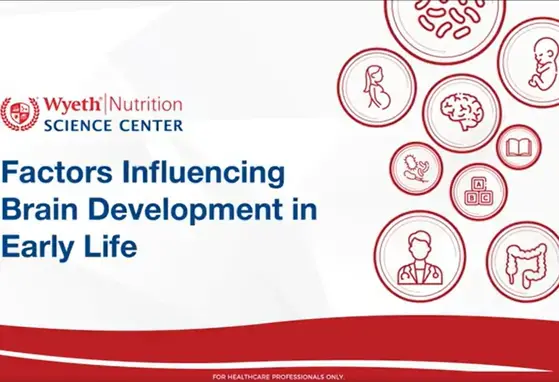[Literature library] Effects of a specific blend of 5 HMOs on gut microbiota development and maturation

According to a multi-country trial, an infant formula containing a particular combination of 5 HMOs (2’-FL, DFL, LNT, 3’-SL and 6’-SL) has been shown to be able to beneficially modulate the gut maturation of formula-fed infants. The entire study consists of a follow-up period up to 15 months of age, with the present report analyzing the secondary outcomes for subjects up to 6 months of age only.
Study design
- A randomized, controlled, double-blind study in healthy term infants aged ≥7– ≤21 days at 32 study sites in Bulgaria, Hungary and Poland
Subject and intervention
- Control group (CG, n = 155),
- Fed a standard infant formula without HMOs
- Fed a standard infant formula without HMOs
- Test group 1 (TG1, n = 158),
- Fed the same standard infant formula with 1.5 g/L supplementation of 5-HMO blend (0.87 g/L 2’-FL, 0.10 g/L DFL, 0.29 g/L LNT, 0.11 g/L 3’-SL and 0.14 g/L 6’-SL)
- Fed the same standard infant formula with 1.5 g/L supplementation of 5-HMO blend (0.87 g/L 2’-FL, 0.10 g/L DFL, 0.29 g/L LNT, 0.11 g/L 3’-SL and 0.14 g/L 6’-SL)
- Test group 2 (TG2, n = 153),
- Fed the same standard infant formula with 2.5 g/L supplementation of 5-HMO blend (1.45 g/L 2’-FL, 0.14 g/L DFL, 0.48 g/L LNT, 0.18 g/L 3’-SL and 0.24 g/L 6’-SL)
- Fed the same standard infant formula with 2.5 g/L supplementation of 5-HMO blend (1.45 g/L 2’-FL, 0.14 g/L DFL, 0.48 g/L LNT, 0.18 g/L 3’-SL and 0.24 g/L 6’-SL)
- Non-randomized human milk-fed reference group (HMG, n = 69)
Results
Gut microbiome
- At 6 months, the 5-HMO formulas (TG1 & TG2) shifted both cesarean and vaginally born infants' gut microbiota compositions toward that of vaginally born human milk-fed infants
- In TG1 and TG2, the relative abundance of Bifidobacterium appeared to increase over 6 months, but in CG, it declined between 3 and 6 months
- In comparison to CG (p < 0.001), the relative abundance of Bifidobacterium increased by ~45% in TG1 & TG2, and was comparable to that in HMG (p > 0.05)
- At 3 and 6 months of age, the relative abundance of Bifidobacterium longum subsp. Infantis (B. infantis) was greater in TG1 (p < 0.0001 and p = 0.010 respectively) and TG2 (p = 0.016 and p = 0.083 respectively) than in CG and was approaching HMG
- At 3 months of age, the prevalence of Clostridioides difficile (C. difficile) was lower in TG1 (6.5%) and TG2 (5.7%) than that of CG (13.3%; p ≤ 0.069)
- At 6 months of age, the prevalence of C. difficile was lower in TG1 (10.6%) and TG2 (6.0%) than that of CG (27.9%; p ≤ 0.001) and was approaching HMG (10.0%; p > 0.05)
- At 6 months of age, the prevalence of C. difficile was lower in TG1 (10.6%) and TG2 (6.0%) than that of CG (27.9%; p ≤ 0.001) and was approaching HMG (10.0%; p > 0.05)
Fecal biomarkers
- sIgA levels in TG1 and TG2 were 53% (p < 0.01) and 43% (p < 0.05) higher than that of CG respectively at 3 months of age
- Lower concentration of alpha-1-antitrypsin (AAT) was observed in TG1 and TG2 when compared with CG at 3 months of age (p < 0.05)
- Lower concentration of calprotectin was observed in TG1 when compared with CG at 3 months of age (p = 0.088)
- Similar observation at 6 months of age (p < 0.05)
- Similar observation at 6 months of age (p < 0.05)
Fecal pH and organic acids
- At 3 and 6 months of age
- Fecal pH in both test groups (TG1 & TG2) was lower than that of CG (p < 0.05)
- Significantly lower concentration of lactate was observed in CG than that of the other groups (p < 0.05)
- The relative proportion of acetate to total short-chain fatty acids (SCFA) was lower in CG than those of test groups (p < 0.01, except CG vs. TG1 at 6 months p = 0.059)
- At 3 months of age, lower relative proportions of butyrate and isobutyrate were observed in both test groups (p < 0.05), which were also similar to HMG
Conclusion
- Infant formula with a specific combination of 5 HMOs supports the development of the intestinal immune system and gut barrier function, as well as changing the gut microbiota such that it resembles that of breastfed infants, with increased levels of bifidobacteria, notably B. infantis and lower levels of toxic C. difficile.
Abbreviations:
2’-FL = 2’-Fucosyllactose; DFL = Difucosyllactose; LNT = Lacto-N-Tetraose; 3’-SL = 3’-Sialyllactose; 6’-SL = 6’-Sialyllactose
Link to the full article:
https://www.ncbi.nlm.nih.gov/pmc/articles/PMC9298649/pdf/fnut-09-920362.pdf
Reference:
Bosheva M et al. Infant formula with a specific blend of five human milk oligosaccharides drives the gut microbiota development and improves gut maturation markers: A randomized controlled trial. Front Nutr. 2022;9:920362.
Other articles that you might be interested in:
- [Video] Understanding Human Milk Oligosaccharides (HMOs) Diversity in Human Milk – Ms. Jodi Bettler
- [Infographic] The diversity of HMOs impacts their functions
WYE-EM-107-AUG-22
If you liked this post you may also like

Factors influencing brain development in early life


